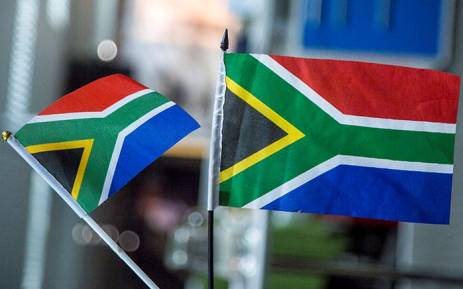The ratings agency says that the recent Cabinet reshuffle is likely to result in a change in the direction of economic policy.

JOHANNESBURG – Fitch Ratings has announced the downgrade of South Africa to so-called junk status.
It changed its rating to ‘BB+’ from ‘BBB-‘, with the outlook stable.
The ratings agency says that the recent Cabinet reshuffle is likely to result in a change in the direction of economic policy.
This comes after S&P earlier this week downgraded South Africa, citing political instability.
Downgrades to junk from the two agencies could see South Africa drop out of some widely used global bond indexes and force international funds which track them or which are prohibited from holding sub-investment grade securities to sell.
Fitch’s move will almost certainly lead to a rise in government debt-servicing costs, which will mean less money for critical services such as housing, education and sanitation, which could incite even more protests over service delivery that have already rocked towns across the country.
Nedbank chief economist Dennis Dykes said: “It is very disappointing, but unfortunately not so too unpredictable. Once S&P has moved it does put a littler bit of pressure on the other rating agencies. Clearly, they also want to move in the interests of investors that actually follow their ratings.”
Read portions of Fitch’s statement below:
The downgrade of South Africa’s Long-Term Issuer Default Ratings (IDRs) reflects Fitch’s view that recent political events, including a major Cabinet reshuffle, will weaken standards of governance and public finances.
In Fitch’s view, the Cabinet reshuffle, which involved the replacement of the finance minister, Pravin Gordhan, and the deputy finance minister, Mcebisi Jonas, is likely to result in a change in the direction of economic policy.
The reshuffle partly reflected efforts by the outgoing finance minister to improve the governance of state-owned enterprises (SOEs). The reshuffle is likely to undermine, if not reverse, progress in SOE governance, raising the risk that SOE debt could migrate onto the government’s balance sheet.
Differences over the country’s expensive nuclear programme preceded the dismissal of a previous finance minister, Nhlanhla Nene, in December 2015 and in Fitch’s view may have also contributed to the decision for the recent reshuffle.
Under the new Cabinet, including a new energy minister, the programme is likely to move relatively quickly. The state-owned electricity company, Eskom, has already issued a request for information for nuclear suppliers and is expected to issue a request for proposals for nuclear power stations later this year.
The Treasury under its previous leadership had said that Eskom could not absorb the nuclear programme with its current approved guarantees, so the Treasury will likely have to substantially increase guarantees to Eskom. This would increase contingent liabilities, which are already sizeable.
According to the 2017/18 budget, the government’s guarantee exposure to public institutions was R308.3 billion at end-March 2017, up from R255.8 billion a year earlier. The main SOEs had additional liabilities of R463 billion in 2016 with no explicit guarantee but with a significant probability that the government would step in should SOEs be unable to service the debt.
The government has repeatedly needed to support SOEs, including Eskom, which is responsible for a large share of liabilities. The new finance minister has stated that he does not intend to change fiscal policy and remains committed to expenditure ceilings that have been a pillar of fiscal consolidation.
However, Fitch believes that following the government reshuffle, fiscal consolidation will be less of a priority given the president’s focus on “radical socioeconomic transformation”. This means that renewed shortfalls in revenues, for example as a result of lower than expected GDP growth, are less likely to be compensated by expenditure and revenue measures. This could put upward pressure on general government debt, which at an estimated 53% of GDP at end-March 2017 was already slightly above the ‘BB’ category median of 51%.
The tensions within the ANC will mean that political energy will be absorbed by efforts to maintain party unity and fend off leadership challenges and to placate rising social pressures for addressing inequality, poverty and weak public service delivery.
The Treasury’s ability to withstand departmental demands for increased spending may also weaken. Political uncertainty was already an important factor behind weak growth last year, as in Fitch’s assessment it has affected the willingness of companies to invest.
The agency believes that the Cabinet reshuffle will further undermine the investment climate. Fitch forecasts GDP growth of 1.2% in 2017 and 2.1% in 2018, but the reshuffle has raised downside risks.
South Africa’s ratings also reflect the following key rating drivers:
The current account deficit narrowed to 3.3% of GDP in 2016 from 4.4% in 2015, on the back of import compression reflecting weak domestic demand, low oil prices and increasing investment income from abroad. This improvement, together with the flexible exchange rate, will contain pressures should external financing dry up.
The government’s low reliance on foreign-currency financing, which accounted for just 11.3% of debt at end-March 2017, is also helping to contain external pressures. Most indicators of economic development are in line with ‘BB’ category medians. GDP per capita at market prices is estimated at $5,207 for 2016, compared with a median of $5,007. The World Bank’s governance indicator, at the 59th percentile, is well above the ‘BB’ median and more in line with the ‘BBB’ median. However, this may not adequately reflect governance issues that were highlighted in the recent state of capture report by the public prosecutor and governance may deteriorate as a result of the reshuffle. The rating is supported by a sound banking sector, which has a Fitch Bank Systemic Risk Indicator of ‘BBB’.
